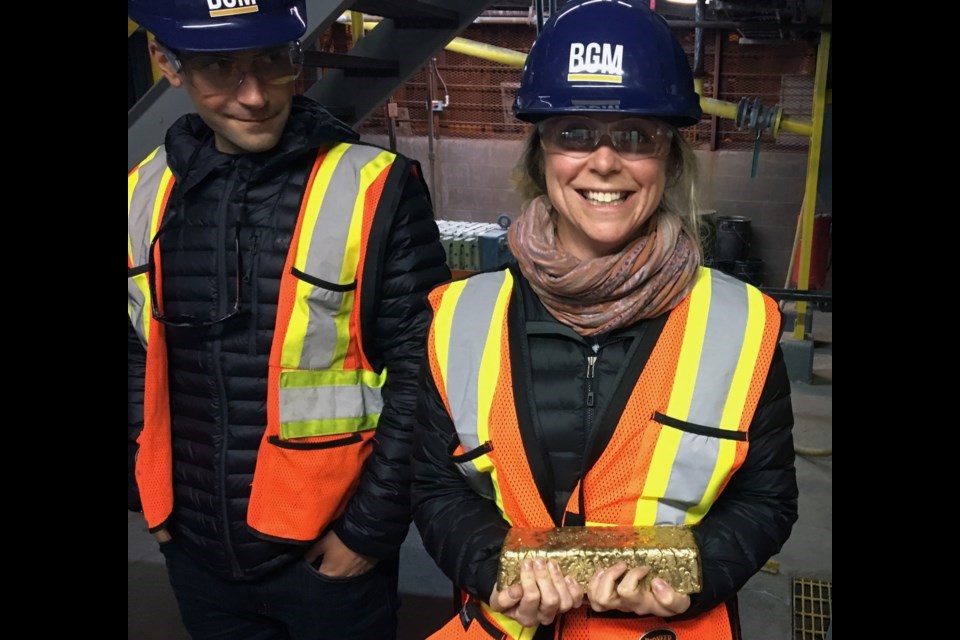Feeling the weight of a solid gold brick in her hands, it was hard for geologist Maggie Layman to contain her excitement.
That 12.4-kilogram (400 troy ounce) gleaming piece of precious metal produced from the Bonanza Ledge underground mine on Barkerville Mountain was a hint of much more to come for Layman in her work developing the neighbouring Cariboo Gold project near Wells, B.C.
Gold is currently trading at $2,418 per troy ounce, so that brick Layman held for a photo opportunity is worth $967,200.
“It is really special to see a project go from soil and rock samples to full gold bricks,” said Layman. “I’m very excited for the future.
“It’s always the best part of the job, the most fun part of it, to get those nice pieces of gold.”
And there’s plenty more to be dug from the area that spawned the Cariboo Gold Rush.
Layman is this year’s recipient of the Association of Mineral Exploration H.H. ‘Spud’ Huestis Award for her work developing the geological model that defined 5.1 million ounces in new underground deposits that make up the Cariboo Gold project.
Based on samples obtained so far, the current mineral resource estimate for the project is approximately 3.5 million ounces indicated and 1.6 million ounces inferred. It’s not hard to figure why everybody associated with the project is excited about the possibilities of another underground mine.
“We’re doing a feasibility study right now which will show the economic potential once we account for development costs, mining costs, how much it costs to produce the gold in the mill and do the floatation process and concentrating it,” said Layman.
Layman is vice- president of exploration Montreal-based Osisko Development Corp. and its Barkerville Gold Mines division and she’s leading the project to create a second underground gold mine in the area using the town of Wells as its operational base. In 2021, Osisko partnered with the Lhtako Dené First Nation to add a second phase to its Bonanza Ledge project on Barkerville Mountain.
“It’s such a big part of the history of British Columbia, the Cariboo Gold Rush that started in the 1860s and placer mining and development is what made B.C. part of Canada,” said Layman.
Layman estimates only about 10 per cent of the property has been drill tested in an area of surface gold showings that stretches for 86 kilometres. Some of the drilling has been close to historic placer and hard rock mines that produced several million ounces of gold in the Barkerville region starting in 1860.
After years of surface mapping and accessing existing underground studies, the Barkerville Gold Mines technical team gained an understanding of the geologic model and what was controlling mineralization in the area. Diamond drilling commenced in 2015 and for five years the company utilized eight-12 drill rigs which produced 700,000 metres of core samples.
The deposit is immediately south of the town of Wells and encompasses Cow Mountain, Barkerville Mountain and Island Mountain. The first gold discovery in the area was in 1858 and during the Cariboo Gold Rush from 1860-70, there was about three million ounces produced. From 1933 to the late-1980s, another 1.5 million ounces was extracted from an underground mine near Barkerville.
The Cariboo Gold project still has to go through an environmental assessment permitting process before a mine can be approved. Provided they clear all hurdles, Osisko hopes to have the mine under construction in 2024. To reach the gold deposits the company plans to use electric-powered roadheader rock cutters, which will maximize production and minimizes mining emissions. Once operational, the mine is expected to have an initial mine life of 12-16 years.



